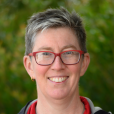
Showing 361 - 380 of 1063 results
Postponed: ANSTO bushfire evacuation exercises

Public Interest Disclosure Scheme
The Public Interest Disclosure Act 2013 aims to promote integrity and accountability in the Australian Public Sector by encouraging the disclosure of information about actual or suspected wrongdoing, protecting people who make disclosures and ensuring that disclosures are properly investigated and dealt with.
International research reveals significance of human fossil methane contribution
A team of researchers including the University of Rochester, CSIRO and ANSTO has found methane emissions from human fossil sources have been greatly underestimated.
ANSTO recognises the contribution of staff for outstanding work, innovation, and excellence
ANSTO announces the recipients of the 2022 organisational awards

Role at ANSTO
Communicating the role of nuclear science for the IAEA’s Sustainable Development Goals
In cooperation with ANSTO and for the third year running, the IAEA has recently hosted a two-week online training course for women professionals working in numerous nuclear industries around the world, titled 'Women 4 Nuclear Science in Education and Communications'.

Role at ANSTO

Role at ANSTO
Keeping every pill consistent & compliant
How well do you know the chemical makeup of your product – batch to batch, dose to dose – or even within one pill or capsule?

Beamtime Guide - XFM
Beamtime Guide on the X-ray Fluorescence Microscopy beamline at the Australian Synchrotron.
Engineering graduate applications now open at SVSR
SVSR is seeking a highly motivated engineering candidate with excellent communication skills to help better understand and manage odour emission from sewer ventshafts.
Nuclear science helps prove earliest Aboriginal occupation
ANSTO researchers contribute to study which finds evidence of Aboriginal occupation 65,000 years ago in Northern Australia.
Application approved for operation of interim waste store
Imaging technology has the ability to capture and display gamma radiation
A new imaging technology developed at ANSTO makes it possible to image, identify and locate gamma-ray radiation in a safe and timely manner.
Tuning thermomechanical properties
Wombat used in study that showed tuneable thermal expansion by controlled gas sorption.
Progress on new oxide ion conductors
New material shows enhanced conductivity for solid oxide fuel cells used in satellites, spacecraft, transport vehicles and as power source
ANSTO contributes to international project to evaluate economics of Small Modular Reactors
ANSTO contributes to new international project to improve how the world assesses the economic viability of Small Modular Reactors
Research captures dynamic atomic interactions in a promising sodium ion battery material
Investigators from UNSW and ANSTO have provided insights into the dynamic interactions of atoms in a promising material for sodium-ion batteries.
